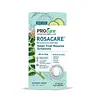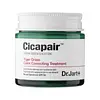What's inside
What's inside
 Key Ingredients
Key Ingredients

 Benefits
Benefits

 Concerns
Concerns

 Ingredients Side-by-side
Ingredients Side-by-side

Water
Skin ConditioningAloe Barbadensis Leaf Juice
Skin ConditioningGlycerin
HumectantButylene Glycol
HumectantGlycyrrhiza Glabra Root Extract
BleachingDimethicone
EmollientDimethicone Crosspolymer
Emulsion StabilisingCetearyl Olivate
Sorbitan Olivate
EmulsifyingDimethicone/Vinyl Dimethicone Crosspolymer
Skin ConditioningC12-14 Pareth-12
EmulsifyingMica
Cosmetic ColorantTitanium Dioxide
Cosmetic ColorantTin Oxide
AbrasiveDimethiconol
EmollientNiacinamide
SmoothingPhenoxyethanol
PreservativeEthylhexylglycerin
Skin ConditioningAllantoin
Skin ConditioningPolyacrylamide
C13-14 Isoparaffin
EmollientLaureth-7
EmulsifyingCarbomer
Emulsion StabilisingCucumis Sativus Fruit Extract
EmollientBisabolol
MaskingTocopheryl Acetate
AntioxidantOctyldodecyl Oleate
EmollientChromium Oxide Greens
Sodium Hydroxide
BufferingHyaluronic Acid
HumectantWater, Aloe Barbadensis Leaf Juice, Glycerin, Butylene Glycol, Glycyrrhiza Glabra Root Extract, Dimethicone, Dimethicone Crosspolymer, Cetearyl Olivate, Sorbitan Olivate, Dimethicone/Vinyl Dimethicone Crosspolymer, C12-14 Pareth-12, Mica, Titanium Dioxide, Tin Oxide, Dimethiconol, Niacinamide, Phenoxyethanol, Ethylhexylglycerin, Allantoin, Polyacrylamide, C13-14 Isoparaffin, Laureth-7, Carbomer, Cucumis Sativus Fruit Extract, Bisabolol, Tocopheryl Acetate, Octyldodecyl Oleate, Chromium Oxide Greens, Sodium Hydroxide, Hyaluronic Acid
Water
Skin ConditioningCentella Asiatica Leaf Water
Skin ConditioningIsononyl Isononanoate
EmollientCyclopentasiloxane
EmollientButylene Glycol
HumectantDimethicone
EmollientPhenyl Trimethicone
Skin ConditioningMethyl Methacrylate Crosspolymer
Beeswax
Emulsion StabilisingGlycerin
HumectantDiethylhexyl Carbonate
EmollientPolyglyceryl-3 Polyricinoleate
EmulsifyingNiacinamide
SmoothingPolymethylsilsesquioxane
Cyclohexasiloxane
EmollientPanthenol
Skin ConditioningDiglycerin
HumectantIron Oxides
Polyglyceryl-4 Diisostearate/Polyhydroxystearate/Sebacate
EmulsifyingIsododecane
EmollientEthylene/Methacrylate Copolymer
Cetearyl Alcohol
EmollientPolyglyceryl-2 Triisostearate
EmulsifyingAluminum Hydroxide
EmollientStearic Acid
CleansingDisteardimonium Hectorite
StabilisingAcrylates/Ammonium Methacrylate Copolymer
Sclerotium Gum
Emulsion StabilisingSodium Benzoate
MaskingAcrylates/Dimethicone Copolymer
Skin ConditioningHydrogen Dimethicone
Chromium Oxide Greens
Triethyl Citrate
MaskingPotassium Sorbate
PreservativeFragaria Vesca Leaf Extract
AstringentDisodium EDTA
BHT
AntioxidantAlcohol
AntimicrobialAsiaticoside
AntioxidantAdenosine
Skin ConditioningTriethoxycaprylylsilane
Lavandula Angustifolia Oil
MaskingBoron Nitride
AbsorbentAsiatic Acid
Skin ConditioningMadecassic Acid
Skin ConditioningCitrus Grandis Peel Oil
MaskingRosmarinus Officinalis Leaf Oil
Masking1,2-Hexanediol
Skin ConditioningAnthemis Nobilis Flower Oil
MaskingHouttuynia Cordata Extract
Skin ConditioningPropanediol
SolventCentella Asiatica Extract
CleansingGentiana Lutea Root Extract
Skin ConditioningArtemisia Absinthium Extract
Skin ConditioningAchillea Millefolium Extract
CleansingArnica Montana Flower Extract
MaskingPolysorbate 20
EmulsifyingAniba Rosodora Wood Oil
AstringentSodium Glycerophosphate
Selaginella Lepidophylla Extract
EmollientPotassium Magnesium Aspartate
BufferingCitric Acid
BufferingCalcium Gluconate
HumectantMadecassoside
AntioxidantMagnesium Gluconate
Skin ConditioningCentella Asiatica Meristem Cell Culture
AntioxidantXanthan Gum
EmulsifyingTitanium Dioxide
Cosmetic ColorantZinc Oxide
Cosmetic ColorantWater, Centella Asiatica Leaf Water, Isononyl Isononanoate, Cyclopentasiloxane, Butylene Glycol, Dimethicone, Phenyl Trimethicone, Methyl Methacrylate Crosspolymer, Beeswax, Glycerin, Diethylhexyl Carbonate, Polyglyceryl-3 Polyricinoleate, Niacinamide, Polymethylsilsesquioxane, Cyclohexasiloxane, Panthenol, Diglycerin, Iron Oxides, Polyglyceryl-4 Diisostearate/Polyhydroxystearate/Sebacate, Isododecane, Ethylene/Methacrylate Copolymer, Cetearyl Alcohol, Polyglyceryl-2 Triisostearate, Aluminum Hydroxide, Stearic Acid, Disteardimonium Hectorite, Acrylates/Ammonium Methacrylate Copolymer, Sclerotium Gum, Sodium Benzoate, Acrylates/Dimethicone Copolymer, Hydrogen Dimethicone, Chromium Oxide Greens, Triethyl Citrate, Potassium Sorbate, Fragaria Vesca Leaf Extract, Disodium EDTA, BHT, Alcohol, Asiaticoside, Adenosine, Triethoxycaprylylsilane, Lavandula Angustifolia Oil, Boron Nitride, Asiatic Acid, Madecassic Acid, Citrus Grandis Peel Oil, Rosmarinus Officinalis Leaf Oil, 1,2-Hexanediol, Anthemis Nobilis Flower Oil, Houttuynia Cordata Extract, Propanediol, Centella Asiatica Extract, Gentiana Lutea Root Extract, Artemisia Absinthium Extract, Achillea Millefolium Extract, Arnica Montana Flower Extract, Polysorbate 20, Aniba Rosodora Wood Oil, Sodium Glycerophosphate, Selaginella Lepidophylla Extract, Potassium Magnesium Aspartate, Citric Acid, Calcium Gluconate, Madecassoside, Magnesium Gluconate, Centella Asiatica Meristem Cell Culture, Xanthan Gum, Titanium Dioxide, Zinc Oxide
 Reviews
Reviews

Ingredients Explained
These ingredients are found in both products.
Ingredients higher up in an ingredient list are typically present in a larger amount.
Butylene Glycol (or BG) is used within cosmetic products for a few different reasons:
Overall, Butylene Glycol is a safe and well-rounded ingredient that works well with other ingredients.
Though this ingredient works well with most skin types, some people with sensitive skin may experience a reaction such as allergic rashes, closed comedones, or itchiness.
Learn more about Butylene GlycolThis ingredient adds a green color to formulations.
You'll likely see this ingredient as part of the blend that makes up 'emerald powder'.
The other ingredients that make up emerald powder include: mica, titanium dioxide, chromium oxide, and ferric ferrocyanide.
Learn more about Chromium Oxide GreensDimethicone is a type of synthetic silicone created from natural materials such as quartz.
What it does:
Dimethicone comes in different viscosities:
Depending on the viscosity, dimethicone has different properties.
Ingredients lists don't always show which type is used, so we recommend reaching out to the brand if you have questions about the viscosity.
This ingredient is unlikely to cause irritation because it does not get absorbed into skin. However, people with silicone allergies should be careful about using this ingredient.
Note: Dimethicone may contribute to pilling. This is because it is not oil or water soluble, so pilling may occur when layered with products. When mixed with heavy oils in a formula, the outcome is also quite greasy.
Learn more about DimethiconeGlycerin is already naturally found in your skin. It helps moisturize and protect your skin.
A study from 2016 found glycerin to be more effective as a humectant than AHAs and hyaluronic acid.
As a humectant, it helps the skin stay hydrated by pulling moisture to your skin. The low molecular weight of glycerin allows it to pull moisture into the deeper layers of your skin.
Hydrated skin improves your skin barrier; Your skin barrier helps protect against irritants and bacteria.
Glycerin has also been found to have antimicrobial and antiviral properties. Due to these properties, glycerin is often used in wound and burn treatments.
In cosmetics, glycerin is usually derived from plants such as soybean or palm. However, it can also be sourced from animals, such as tallow or animal fat.
This ingredient is organic, colorless, odorless, and non-toxic.
Glycerin is the name for this ingredient in American English. British English uses Glycerol/Glycerine.
Learn more about GlycerinNiacinamide is a multitasking form of vitamin B3 that strengthens the skin barrier, reduces pores and dark spots, regulates oil, and improves signs of aging.
And the best part? It's gentle and well-tolerated by most skin types, including sensitive and reactive skin.
You might have heard of "niacin flush", or the reddening of skin that causes itchiness. Niacinamide has not been found to cause this.
In very rare cases, some individuals may not be able to tolerate niacinamide at all or experience an allergic reaction to it.
If you are experiencing flaking, irritation, and dryness with this ingredient, be sure to double check all your products as this ingredient can be found in all categories of skincare.
When incorporating niacinamide into your routine, look out for concentration amounts. Typically, 5% niacinamide provides benefits such as fading dark spots. However, if you have sensitive skin, it is better to begin with a smaller concentration.
When you apply niacinamide to your skin, your body converts it into nicotinamide adenine dinucleotide (NAD). NAD is an essential coenzyme that is already found in your cells as "fuel" and powers countless biological processes.
In your skin, NAD helps repair cell damage, produce new healthy cells, support collagen production, strengthen the skin barrier, and fight environmental stressors (like UV and pollution).
Our natural NAD levels start to decline with age, leading to slower skin repair, visible aging, and a weaker skin barrier. By providing your skin niacinamide, you're recharging your skin's NAD levels. This leads to stronger, healthier, and younger looking skin.
Another name for vitamin B3 is nicotinamide. This vitamin is water-soluble and our bodies don't store it. We obtain Vitamin B3 from either food or skincare. Meat, fish, wheat, yeast, and leafy greens contain vitamin B3.
The type of niacinamide used in skincare is synthetically created.
Learn more about NiacinamideTitanium dioxide is a mineral UV filter widely used in sunscreens and cosmetics.
It is one of only two UV filters officially classified as “mineral” by regulatory agencies, the other being zinc oxide.
Titanium dioxide provides broad-spectrum protection mostly in the UVB and UVAII range, with some protection in the UVAI range.
While its UVA protection isn’t as strong as zinc oxide’s, the difference is minor.
A common myth is that mineral UV filters reflect UV light. However, modern research shows titanium dioxide absorbs UV radiation like chemical filters (~95% absorption & 5% reflection).
Thanks to its non-irritating nature, titanium dioxide is suitable for sensitive, acne-prone, or redness-prone skin. It is unlikely to cause "eye sting" like other sunscreen ingredients.
A major drawback of this ingredient is its white cast and thick texture. This is why mineral sunscreens often leave a white cast and are less cosmetically elegant than chemical/hybrid sunscreens.
To improve white cast and spreadability, micronized or nano-sized titanium dioxide is often used.
There are ongoing concerns surrounding nano-titanium oxide's impact on marine ecosystems.
There is no conclusive evidence that any form of titanium oxide (or any other sunscreen ingredients) will cause harm to marine ecosystems or coral reefs. The science is still developing but many consumers are keeping a close eye on this issue.
Please note, many destinations have reef-safety sunscreen rules. For instance, the U.S. Virgin Islands advises all visitors to use non-nano mineral sunscreens.
Nano mineral sunscreens once raised safety concerns about absorption into skin.
Extensive research has shown that they do not penetrate healthy or damaged skin; they remain safely on the surface and the top layer of dead skin (stratum corneum).
You'll likely find titanium dioxide bundled with alumina, silica, or dimethicone. These ingredients help make titanium dioxide highly photostable; this prevents it from interacting with other formula components under UV light.
Learn more about Titanium DioxideWater. It's the most common cosmetic ingredient of all. You'll usually see it at the top of ingredient lists, meaning that it makes up the largest part of the product.
So why is it so popular? Water most often acts as a solvent - this means that it helps dissolve other ingredients into the formulation.
You'll also recognize water as that liquid we all need to stay alive. If you see this, drink a glass of water. Stay hydrated!
Learn more about Water